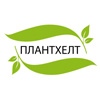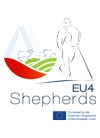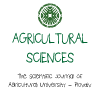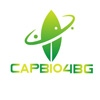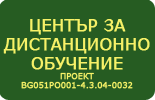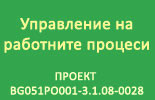Agricultural economics
|
Course title: |
Agricultural economics |
|
|
Course code: |
IFAEC |
|
|
ECTS: |
5 |
|
|
In-class hours |
Lectures: |
30 |
|
Laboratory work/Tutorials: |
30 |
|
|
Self-preparation hours |
Practical training: |
30 |
|
Other: |
35 |
|
|
Total hours: |
125 |
|
|
Language: |
English |
|
|
Study cycle: |
BSc, Master |
|
|
Semester: |
Winter, summer |
|
|
Faculty: |
Faculty of Economics |
|
|
Name of the lecturer(s): |
Prof. Dimo Atanasov, PhD |
|
|
Mode of delivery: |
Face-to-face, distance learning |
|
|
Prerequisites: |
Microeconomics is advisable but not a prerequisite |
|
|
Learning outcomes of the course unit: |
The course Agricultural Economics aims at developing students’ basic knowledge in the field. The course consists of two parts. The first part examines the production process in agriculture, the natural resources used in agricultural production, the demand and supply relations, and the basic policy instruments. The three basic models for optimizing the farm performance are discussed: input-output. The second part introduces the institutional theory and examines the main processes in Bulgarian agriculture during the reform (1990-2010) and after the country accession to EC. This part is designed especially for foreign students. |
|
|
Course contents: |
LECTURES 1. Introduction to agricultural economics. The role of agriculture in Bulgarian economy. Prospects for development after accession to the European Union. 2. Demand for agricultural products. Individual preferences and budget constraints. Demand curve. Main factors, elasticity and dynamic of demand. 3. Agricultural production system. Nature and key elements. Structure and characteristics of the agricultural system. Types of agricultural production systems. Viability of production systems. 4. Land resources in agriculture. Earth as a production factor. Land Cadastre and economic valuation of the land. Agricultural use and land degradation. Market and lease of agricultural land. 5. Labour in agriculture. Demand and supply of labor in agriculture. Characteristics of labor resources in agriculture. Characteristics of the labor market in rural areas. Social security of persons employed in agriculture. 6. Agricultural capital. Definition, classification and characteristics of agricultural capital. Sources of agricultural capital. Return on capital in agriculture. Reproduction of agricultural capital. 7. Investment projects in agriculture. Nature and characteristics of the investment process in agriculture. Stages of the investment process. Evaluation of investment projects in agriculture. 8. Production functions in agriculture. Nature and key elements. Features of the functions in agriculture. Fixed and variable costs. Short and long-term economic period. . 9. Production functions in the short term. General form and characteristics of production functions in agriculture. Total, average and marginal physical product. Stages of the production process. 10. Optimizing the use of a variable factor of production. Average and marginal revenues and costs. Maximizing economic performance. 11. Resource model. Replacement of production factors. Optimization of production technologies. Returns to scale and expansion path. 12. Product model. Boundary of production possibilities. Isorvenue line. Pareto Optimum. Contract curve and optimization of the product structure in agriculture. Economies of scale in agriculture. 13. Production costs in agriculture. Classification and influence of the technological level. Characteristics of the production function of type "B" 14. Profit maximization. Total costs and revenues. Optimization of the quantity produced. Analysis of critical points. 15. Supply of agricultural products. Factors determining the supply. The elasticity of supply. The supply curve in agriculture. Influence of technological change.Market supply. 16. Prices of agricultural products. Types of agricultural products markets. Pricing in a competitive market. Market distortions and pricing under monopolistic competition, oligopoly, and monopoly in agriculture. Fluctuations in prices of agricultural commodities. 17. Economic results of the agriculture business. Distribution of income in agriculture. Revenue, margins and profits. Technical and economic efficiency of agricultural production. Productivity and profitability of production. 18. Risk in agriculture. Nature, types and risk assessment in agriculture. Risk management in agriculture. Concentration and distribution of risk. 19. Agricultural institutions. Fundamentals and development of institutional economics. Social capital and organization of joint actions. Institutional settings: property rights and governance structure. Actors and transactions. Opportunity for development of rural institutions. 20. European agricultural model - the nature and basic parameters. Sustainable Agriculture and Rural Development. Evaluation of environmental, social and economic parameters of sustainability. 21. Agricultural reform in Bulgaria (1990-2000) -Overview. Land restitution and liquidation of the cooperatives. The rise and fall of the new cooperatives. Land reform in Bulgaria. Economic effect of land fragmentation. Fragmentation in ownership and land use. Soil protection after agricultural reform. 22. The farm structure after restitution. Cooperatives, Large and small farmers. Bipolar farm structure and its consequences. Farm structure and biodiversity. The social capital after the agrarian reform. Minority issues after the reform - the case of the Land Program 23. Reform in the irrigation sector. Property rights on water and irrigation infrastructure. Water supply and demand. Water pricing. Institutional options for sustainable irrigation. 24. EU support for Bulgarian Agriculture. SAPARD program. Rural Development Program of Bulgaria (2005-2013). Problems in implementation of the RDP and the economic impact
TUTORIALS 1. Demand for agricultural products. Individual preferences and budget constraints. Demand curve. Main factors, elasticity and dynamic of demand. 2. Agricultural production system. Nature and key elements. Structure and characteristics of the agricultural system. Types of agricultural production systems.. 3. Land resources in agriculture. Land Cadastre and economic valuation of the land. Market and lease of agricultural land. 4. Labour in agriculture. Demand and supply of labor in agriculture. 5. Agricultural capital. Definition, classification and characteristics of agricultural capital. Return on capital in agriculture. Reproduction of agricultural capital. 6. Investment projects in agriculture. Evaluation of investment projects in agriculture. 7. Production functions in agriculture. Fixed and variable costs. Short and long-term economic period. .Production functions in the short term. Total, average and marginal physical product. Stages of the production process. 8. Optimizing the use of a variable factor of production. Average and marginal revenues and costs. Maximizing economic performance. Resource model. Optimization of production technologies. Returns to scale and expansion path. Product model. Boundary of production possibilities. Isorevenue line. 9. Production costs in agriculture. Profit maximization. Total costs and revenues. Optimization of the quantity produced. Analysis of critical points. Supply of agricultural products. Factors determining the supply. Elasticity of supply.. Supply curve in agriculture. Influence of technological change.Market supply. 10. Prices of agricultural products. Types of agricultural products markets. Pricing in a competitive market. Market distortions and pricing under monopolistic competition, oligopoly, and monopoly in agriculture. 11. Economic results of agriculture business. Distribution of income in agriculture. Revenue, margins and profits. Technical and economic efficiency of agricultural production. Productivity and profitability of production. 12. Agricultural institutions. Fundamentals and development of institutional economics. Social capital and organization of joint actions. Institutional settings: property rights and governance structure. Actors and transactions. Opportunity for development of rural institutions. |
|
|
Recommended or required reading: |
1. Penson, J. Pope, R, and Cook, M. 1986, Introduction to Agricultural Economics. Prentice-Hall. 2. Theesfeld I. 2005. A common Pool Resources in Transition. Determinants of Institutional Change for Bulgaria’s Post Socialists Irrigation Sector. Shaker Verlag 3. Hanish M. 2003. Property Reform and Social Conflict . Shaker Verlag 4. Dirimanova. V. 2008. Economic Effects of Lf Land Fragmentation. Property Rights. Land Markets and Contracts in Bulgaria. Shaker Verlag. 5. Penov I. (2002). "The Use of Irrigation Water During the Transition in Bulgaria's Plovdiv Region" . CEESA Discussion Paper No 7/2002 ISSN 1616-9166. Humboldt University of Berlin. www.ceesa.de. 6. Penov, I.(2004)." Institutional Options for Sustainable Irrigation: Evidence from Bulgaria," CEESA Discussion Paper N 21/2004 Humboldt University of Berlin. www.ceesa.de |
|
|
Planned learning activities and teaching methods: |
The main part of the material in Agricultural Economics is taught through lectures. The tutorials are organised as: (1) practical exercises; (2) discussions and analysis of articles. |
|
|
Assessment methods and criteria: |
Participation in practical exercises -20% Participation in class discussions-20% Final written exam-60% |
|
 - Events on the occasion of the 80th anniversary of AU
- Events on the occasion of the 80th anniversary of AU
